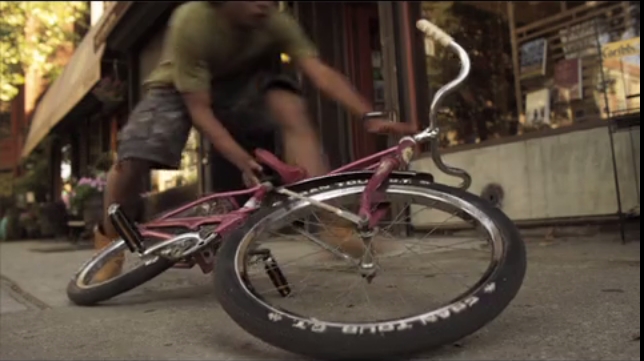Case Study: DP Yoga and Staying Flexible
Name: Jacob Pinger, director of photography, Airplane Repo, K-Ci and JoJo, Fly Girls, The Cho Show, Star Trek New Voyages, The Cycle, Parks and Recreation.
Film: The Cycle, an independent short.
Situation: What do you do when nothing goes as planned? These filmmakers had found the perfect location and the perfect way to shoot it when storm clouds intervened.

After weeks of preparation on The Cycle, it rained on the first week of shooting, so we had to come up with a new schedule. That meant we lost our original Brooklyn location, a beautiful apartment courtyard, where we had booked an entire day to shoot an important five-page scene. We went off to desperately scour the neighborhood during our thirty-minute lunch break. The place we found nearby wasn't perfect; it was overgrown with bushes and trees that would need to be trimmed back, and there was no guarantee that the location would have power, since it was an old, abandoned retirement home. As a result, I might not have the ability to use lights, a potential disaster for the look I was trying to achieve. And, as an added bit of misfortune, the city told us that we could not park our equipment truck nearby. It would be blocks away, which meant that I would only be able to unload a few things. In short, I hated this location. The director turned to me, and said, "Can you make it work?"
The relationship between a director and a DP is a close creative marriage, but it is not a marriage of equals. It’s the director’s job to say what the scene needs, and the DP’s job to figure out how to achieve it. So when he asked me, "Can you make it work?" I did what I’d been trained to do. I said, "Yes." Then I took a deep breath and contemplated what I’d gotten myself into. From my apprenticeship with master cinematographers, I knew it is my job to always
- Have a back-up plan;
- Have a few different pieces of equipment in case something breaks and so we can take advantage of unexpected situations;
- Make sure we got the scene shot, because we’re here now and it’s got to be done.
The problem was that the director and I had spent a lot of time deciding on a certain look for the film. Although the story took place in an urban setting, we wanted to steer clear of some of the clichés that have dominated these kinds of story lines, such as a raw, gritty look. In fact, we wanted to portray the neighborhood of Bed-Stuy in a more observational and detached manner, with rich, warm tones, and subtle camera work. But now we wouldn’t have the time or resources to pull off our intended look.
"How do you feel about hand-held?" I asked the director. Often, hand-held shots are like super-heroes coming to the rescue—they don’t involve a lot of set-ups, and a skilled camera operator can easily move the camera to encompass the action. We looked at the reality, and collectively decided there was no possible way of shooting all the coverage we needed without the flexibility and speed that I could achieve with a hand-held camera. A basic rule of thumb is that you should get as many camera positions as you have time for. Today, we had time for only one. I tossed out my carefully-crafted shot list and hoisted the Red One camera onto my shoulder.
The day was a blur. We sprinted through all the set-ups with the limited daylight in that dark and still over-grown courtyard. After ten straight hours of shooting I was physically and emotionally drained, but elated, because the scene we shot was better than what we’d planned.
Lesson Learned: Because productions never go as planned, you have to stay flexible and look for the "happy accident;" your healthy collaboration with the director will make this possible, even fun. Your job is to keep the shoot going and support the director’s vision. When everything seems to go wrong, follow these tips:
- Be expedient. Use what you have.
- Seek creative ways to cut down on shooting time, such as doing the whole scene in a single shot, or using a hand-held camera that can move to the actions (so you don’t have to stop frequently for new camera set-ups).
- Try a whole new approach, such as shooting the scene through a window or reflected in a mirror.
- Find a way to "cheat" a new location in close proximity to where you are currently shooting –sometimes by facing the opposite direction, a location can attain a whole new look.
- Use natural light as much as possible; it doesn’t require electricity or setting up.
- Remember: people have made movies with far less equipment and in far worse circumstances than you are in right now.
Note: For his efforts on this project, Jacob Pinger won the Emerging Cinematography Award from the International Cinematographers Guild.